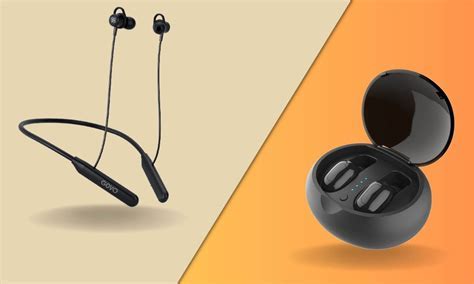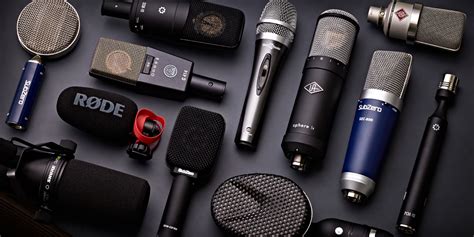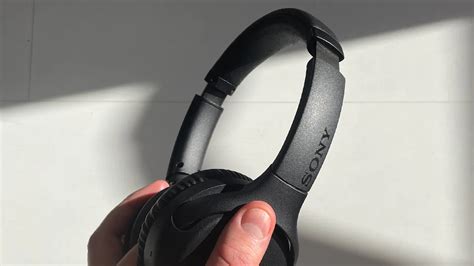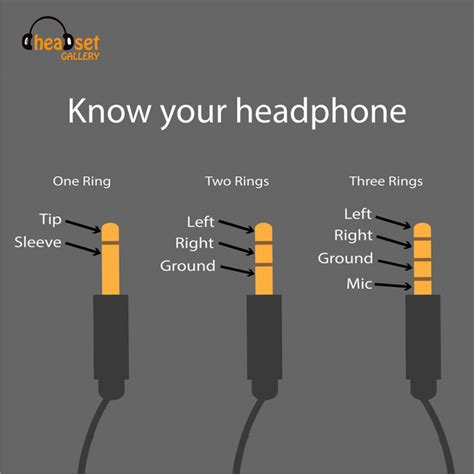Have you ever marveled at the behind-the-scenes wonders of communication technology? The captivating world of sound recording devices and headsets holds an intriguing array of secrets waiting to be discovered. Enveloped within these unassuming accessories lies a synergy of delicate mechanisms working in perfect harmony, allowing us to enjoy crystal clear audio and seamless conversation.
When it comes to audio transmission, certain tools overshadow others, such as the trusted headphones with built-in microphones. With their ability to capture and emit sound, these ingenious devices have revolutionized the way we communicate and experience multimedia. By effectively merging two essential components into one compact unit, they grant us the freedom to blend personal audio immersion with clear voice transmission on a daily basis.
The key lies within the intricacies of their inner workings. Headphones with microphones ingeniously employ a combination of both audio playback and sound recording technologies. By channeling sound waves through meticulously designed circuitry, they transform electrical impulses into audible signals and vice versa, creating an immersive listening experience and enabling seamless two-way communication.
Exploring the Fundamentals of Earphones

In this section, we will delve into the fundamental aspects of earphones and explore the underlying principles that make them an essential audio accessory for many individuals. By examining the components and functionality of earphones, we can gain a deeper understanding of how these devices enhance our audio experiences.
One key element of earphones is the driver, which is responsible for converting electrical signals into sound waves that can be heard by the human ear. The driver is meticulously designed utilizing advanced technology and precision engineering to ensure optimal sound reproduction and clarity. Within the driver, various components such as magnets, diaphragms, and voice coils work in harmony to produce high-quality audio.
- Magnets play a crucial role in the functioning of earphones by creating a static magnetic field. This field interacts with the voice coil, causing it to move back and forth rapidly. This movement is what generates sound waves.
- The diaphragm, often made of thin, lightweight materials such as Mylar or titanium, acts as a vibrating membrane. When the voice coil moves, it transfers this motion to the diaphragm, causing it to vibrate and produce sound.
- The voice coil, a small coiled wire, is connected to the diaphragm and suspended between the magnets. When an electrical signal is passed through the voice coil, it creates a magnetic field that interacts with the static magnetic field produced by the magnets, resulting in the movement of the voice coil.
Additionally, earphones are equipped with tiny sound channels or conduits that aid in delivering sound directly into the ear canal. These channels are carefully engineered to ensure optimal sound isolation, reducing external noise interference and enhancing the listening experience.
Understanding the basics of earphones enables us to appreciate their intricate design and the technology involved in their creation. By grasping the inner workings of these devices, we can make more informed decisions when choosing the perfect pair of earphones that suit our audio preferences.
The Role of Microphones in Headphones
When it comes to the fascinating world of headphones, one cannot underestimate the pivotal role that microphones play in enhancing the overall audio experience. These tiny yet powerful devices serve as the communication bridge between the user and the world of sound, capturing and converting audio signals into electrical impulses that can be transmitted and processed by the headphone system.
Microphones in headphones come in various shapes and sizes, each designed to cater to different needs and preferences. From the traditional boom microphones commonly used in gaming headsets to the discreetly placed in-line microphones found in earbuds, these miniature sound-gathering devices have become an integral part of modern headphone designs.
One of the key functions of microphones in headphones is to enable seamless communication. Whether you are making a phone call, participating in online gaming, or using voice commands with virtual assistants, microphones pick up your voice and convert it into electrical signals. These signals are then transmitted through cables or wirelessly to the connected device, allowing clear and uninterrupted communication.
Another crucial role of microphones is noise cancellation. By capturing and analyzing external sounds, microphones can differentiate between wanted audio (such as your voice) and unwanted background noise. This valuable information is then fed into the headphone's circuitry, which generates inverse sound waves to neutralize the unwanted noise, resulting in a more immersive and focused listening experience.
In addition to communication and noise cancellation, microphones also allow for voice recording and dictation purposes. They enable users to capture their thoughts, memos, or creative ideas hands-free, providing a convenient and efficient way to document information while on the go.
Overall, the integration of microphones in headphones has revolutionized our audio experiences. Through their ability to convert sound into electrical signals, microphones enhance communication, contribute to noise cancellation, and facilitate voice recording. These essential components work in harmony with other headphone features to deliver an immersive and personalized sound experience to users around the world.
Different Types of Headsets with Microphones

When it comes to audio devices that provide both sound and the capability to record or transmit audio, various types of headsets with microphones are available. These headsets come in a range of designs and functionalities, catering to different preferences and purposes.
- Over-Ear Headsets: These headsets feature ear cups that encompass the ears, providing an immersive audio experience while also incorporating a built-in microphone. They are often preferred for gaming and professional use, offering superior sound quality and noise isolation.
- On-Ear Headsets: On-ear headsets rest on the ears rather than enveloping them completely. They are typically lighter and more portable than over-ear models while still providing decent audio quality and a microphone for communication purposes.
- In-Ear Headsets: Also known as earphones or earbuds, these compact headsets fit snugly into the ear canal. They offer a convenient and portable option while still including a microphone for hands-free calling or voice recording. In-ear headsets are commonly used with mobile devices.
- Wireless Headsets: These headsets utilize Bluetooth or other wireless technologies to connect to audio sources without the need for physical cables. Wireless headsets with microphones provide freedom of movement, often without compromising on sound quality or microphone functionality.
- True Wireless Earbuds: True wireless earbuds are a type of in-ear headset that come as individual buds, without any wires connecting them. They offer ultimate portability and convenience, often featuring built-in microphones for clear conversations while on the go.
- Noise-Canceling Headsets: These headsets are designed to reduce or eliminate background noise, providing a more immersive audio experience. Many noise-canceling headsets also incorporate microphones for crystal-clear voice capture, making them ideal for environments with high ambient noise levels.
Each type of headset with a microphone has its unique features and advantages, allowing users to choose one that suits their specific requirements and preferences. Whether for gaming, professional use, listening to music, or making phone calls, there is a headset available to enhance the audio experience and provide clear communication.
Wired vs. Wireless Headsets: Choosing the Right Option
When it comes to selecting a headset for your audio needs, there are two popular options to consider: wired and wireless headphones with built-in microphones. These options provide users with the ability to enjoy audio playback and communicate hands-free, but they differ in how they function and the benefits they offer.
Wired Headsets:
Wired headphones with microphones are connected directly to the audio source through a physical cable. This connection ensures a stable and uninterrupted transmission of audio signals from the device to the headset. The microphone in wired headsets typically utilizes a wired connection as well, ensuring clear and reliable voice transmission during calls or recordings.
The wired nature of these headsets eliminates concerns of battery life or wireless connectivity, making them an ideal choice for individuals who require consistent audio performance without any interruptions.
Wireless Headsets:
Wireless headphones with microphones utilize advanced technology to transmit audio signals and enable hands-free communication. These headsets connect to audio sources through wireless technologies such as Bluetooth. This wireless connection allows users to move freely without being physically tethered to the audio source.
One advantage of wireless headsets is their convenience and portability. Without the need for cords, users can enjoy a tangle-free experience and easily carry the headset wherever they go. Additionally, wireless headsets often feature built-in rechargeable batteries, offering users the flexibility of extended usage and eliminating the need for frequent battery replacements.
Choosing the Right Option:
When deciding between wired and wireless headphones with microphones, it is important to consider your specific needs and preferences. If you value consistent and reliable audio performance without any concerns about battery life, wired headsets may be the ideal choice for you.
On the other hand, if you prioritize freedom of movement and convenience, wireless headsets provide the flexibility to move around without the hassle of tangled cords. However, it is important to note that wireless headsets may require occasional charging to ensure uninterrupted usage.
Ultimately, both wired and wireless headphones with built-in microphones offer unique advantages, and the right option depends on your personal preferences and specific use cases. By considering the features and benefits of each, you can make an informed decision and enjoy your audio experience to the fullest.
Noise-Canceling Technology: Enhancing Your Audio Experience

Discover the fascinating technology behind noise-canceling headphones equipped with built-in microphones. These cutting-edge audio devices revolutionize your listening experience by reducing unwanted background noise and capturing crystal-clear audio. Let's explore the intricate workings of these advanced headsets and delve into the science behind their noise-canceling capabilities.
Noise-Canceling Headphones: Noise-canceling headphones are designed to block out external sounds, immersing you in a world of pure audio bliss. The technology used in these headphones actively identifies and counters ambient noise, ensuring that you can enjoy your favorite music, podcasts, or calls without any distractions. By employing innovative techniques, noise-canceling headphones create an environment of serenity and allow you to focus solely on the audio content.
Micronized Microphone: At the heart of noise-canceling headphones lies a micronized microphone. This small yet powerful component picks up your voice with remarkable precision, guaranteeing clear communication during phone calls or voice recordings. The microphone is strategically positioned within the headset to eliminate background noise and capture only the intended audio. Its sensitive nature enables you to be heard loud and clear, enhancing the overall communication experience for both you and the recipient.
Active Noise Cancellation: The process of active noise cancellation is the key to the exceptional performance of these headphones. By utilizing sophisticated algorithms and real-time signal processing, noise-canceling headphones identify and analyze incoming sounds in your environment. This analysis prompts the headphones to generate an inverse sound wave that matches the amplitude and frequency of the detected noise. When these waves converge, they cancel each other out, effectively diminishing the unwanted noise.
Ensuring Audio Fidelity: Noise-canceling headphones also excel at maintaining audio fidelity. They achieve this by employing advanced mechanisms that prevent degradation of sound quality during the noise-cancellation process. By carefully adjusting the audio signal, these headphones ensure that the music or audio content you hear is rendered with exceptional clarity and accuracy, even as they actively suppress background noise. This ensures a truly immersive and high-fidelity audio experience like no other.
With their intelligent noise-canceling technology and integrated microphones, noise-canceling headphones have redefined audio immersion and communication. Whether you are enjoying your favorite music in a bustling city or making a crystal-clear voice call in a noisy environment, these headphones provide an unparalleled audio experience. By eliminating distractions and focusing solely on the audio content you desire, noise-canceling headphones with microphones enable you to fully immerse yourself in a world of pristine audio bliss.
The Significance of Frequency Response in Headsets Equipped with Microphonic Capabilities
When discussing the functionality and performance of advanced audio devices, it is imperative to understand the vital role played by the characteristic known as frequency response. This key attribute greatly influences the overall audio quality and fidelity produced by headphones that are equipped with microphone features, enhancing the user experience in various audio-related applications.
Frequency response refers to the measurement of how effectively a headset reproduces sound across different frequencies. It details the range of frequencies that a pair of headphones with a built-in microphone can accurately replicate, from the lowest bass notes to the highest treble tones. It is imperative to consider the significance of an extended frequency response as it directly impacts the headphone's ability to accurately reproduce audio across the entire spectrum, producing a more immersive and true-to-life listening experience.
Headsets with microphones that exhibit a wider frequency response deliver richer and more nuanced sound reproduction, allowing users to fully immerse themselves in their audio content. By capturing a broader range of frequencies, these devices can accurately convey the subtle details in music, movies, and voice recordings, resulting in a clearer and more realistic sonic performance.
Furthermore, a wider frequency response in headphones with microphones is particularly crucial for professionals in fields such as audio production, gaming, and telecommunication. For audio engineers and musicians, accurate frequency reproduction is vital for creating and mixing music, as it allows them to discern and address imperfections or imbalances in the audio mix. Gamers benefit from enhanced frequency response as it provides a more immersive gaming experience, allowing them to hear subtle in-game details like footsteps or environmental cues. Additionally, individuals in telecommunication rely on headsets with microphones featuring a broad frequency response to ensure clear and intelligible communication during calls and conferences.
In conclusion, the importance of frequency response in headphones equipped with microphones cannot be overstated. A broader frequency range facilitates improved audio reproduction, making these devices ideal for a vast range of applications, from entertainment to professional use. Therefore, when seeking headphones with microphone capabilities, considering the frequency response will greatly contribute to achieving an optimal listening and communication experience.
How Does the Microphone Capture Sound in Headphones?

In this section, we will explore the mechanisms behind the microphone's ability to pick up and capture sound in headphones.
The microphone in a pair of headphones plays a crucial role in converting sound waves into electrical signals. It acts as a transducer, transforming acoustic energy into electrical energy that can be processed and transmitted.
One of the key components of a headphone microphone is the diaphragm. The diaphragm is a thin, flexible material that vibrates in response to sound waves. When sound waves hit the diaphragm, it moves back and forth, generating fluctuations in electrical current. These electrical fluctuations are then converted into a usable audio signal.
Within the microphone, there is also an element called the voice coil. The voice coil interacts with a magnet, creating a magnetic field that causes the diaphragm to vibrate. The diaphragm's movement is directly proportional to the incoming sound wave's intensity and frequency.
As the diaphragm vibrates, it generates electrical signals which are then transmitted through the microphone's wiring and circuitry. These signals are further processed, amplified, and converted into a digital format if required. The resulting audio signal is then played back through the headphones for the user to hear.
- The diaphragm converts sound waves into electrical signals.
- The voice coil and magnet generate vibrations in the diaphragm.
- Electrical signals are transmitted through the microphone's circuitry.
- The processed audio signal is played back through the headphones.
Overall, the microphone in headphones functions as a critical component in capturing sound and facilitating communication or audio playback. Its transducing capabilities allow for the conversion of sound waves into electrical signals, enhancing the overall listening experience for headphone users.
Important Factors to Consider When Selecting Headphones with Built-in Microphones
When searching for the perfect headphones equipped with integrated microphones, it is crucial to take into account several key features to ensure an enhanced audio experience. These factors determine the functionality and performance of the headphones beyond their basic design and appearance.
Audio Quality: A vital consideration when choosing headphones with microphones is the audio quality they deliver. Look for headphones that offer a balanced and immersive sound experience, with clear highs, rich lows, and accurate midrange frequencies. The headphones should accurately reproduce the audio, allowing for an enjoyable listening experience.
Microphone Quality: The quality of the built-in microphone is another critical factor. A good microphone should provide clear and precise sound pickup without any distortion or background noise interference. Opt for headphones with noise-cancelling features to ensure crystal-clear voice transmission during calls or online meetings.
Comfort and Fit: The comfort and fit of the headphones cannot be overlooked, as it significantly impacts long-term usage. Consider headphones with adjustable headbands, padded ear cups, and lightweight designs to ensure a comfortable fit for extended periods. The headphones should securely fit over the ears without causing discomfort or fatigue.
Connectivity Options: It is important to select headphones that offer compatible connectivity options for your specific needs. Whether you prefer wired or wireless options, ensure that the headphones are compatible with your devices. Wireless headphones can provide flexibility and ease of movement, while wired headphones often offer higher audio quality and a more reliable connection.
Additional Features: Look for headphones that offer additional features that align with your requirements and preferences. Examples of such features include in-line controls for convenient volume adjustment and call management, foldable designs for portability, and compatibility with virtual voice assistants for easy access to voice commands.
In conclusion, choosing the right headphones with built-in microphones involves considering factors such as audio and microphone quality, comfort, connectivity options, and additional features. A combination of these features will ensure an immersive audio experience and seamless communication in various scenarios, be it listening to music, making calls, or participating in online meetings.
Tips for Properly Using Headsets with Integrated Mics

When it comes to making the most out of your headphones equipped with built-in microphones, there are a few key considerations to keep in mind. In this section, we will provide you with valuable suggestions to ensure a seamless and optimal audio experience, without delving into the technicalities of how these devices function.
First and foremost, it's essential to find a comfortable fit for your headphones. Take the time to adjust the headband or ear cups to match your head size and shape. A snug yet comfortable fit will not only enhance audio quality but also prevent any discomfort during extended periods of use.
Next, be mindful of noise isolation. In environments with significant background noise, the integrated microphone can pick up unwanted sounds, affecting the clarity of your voice. To mitigate this issue, consider using noise-canceling headphones or finding a quieter space for conversations or recordings.
Additionally, pay attention to the positioning of the microphone. Proper microphone placement is crucial to ensure optimal sound capture. Generally, the microphone should be positioned close to your mouth, ideally around two finger-widths away. Experiment with microphone placement and test the sound quality until you find the sweet spot that results in clear and intelligible audio.
Another important tip is to be conscious of your speaking volume. Avoid whispering or speaking too softly, as this can lead to unclear audio during voice calls or recordings. Speak at a natural volume, ensuring your voice is projected adequately into the microphone for the best possible sound quality.
Lastly, practice good maintenance habits. Keep your headphones clean and free from dust and debris that may interfere with microphone performance. Regularly check the cable connections for any signs of damage and handle your headphones with care to prolong their lifespan.
By following these tips, you can optimize your experience using headphones with integrated microphones, ensuring crystal-clear audio and comfortable communication in various settings.
How do I use headphones and speakers at the same time on windows 10
How do I use headphones and speakers at the same time on windows 10 by Bhupinder Tube 322,616 views 3 years ago 1 minute, 49 seconds
FAQ
What are headphones with microphones?
Headphones with microphones are audio devices that combine the functions of both headphones and microphones. They allow users to listen to audio while also being able to speak into the attached microphone.
How do headphones with microphones work?
Headphones with microphones work by using a combination of speakers and a small microphone. The speakers produce sound that can be heard by the user, while the microphone captures the user's voice and converts it into an electrical signal that can be transmitted through the headphone cable.
What types of connectors are used for headphones with microphones?
Headphones with microphones can use various types of connectors, depending on the device they are intended to be used with. Common connectors include 3.5mm audio jacks, USB connectors, and Lightning connectors (for Apple devices). These connectors allow the headphones to be plugged into a compatible device and establish a connection for both audio playback and microphone input.
Are headphones with microphones compatible with all devices?
Headphones with microphones are generally compatible with most devices that have a headphone jack or support the specific connector used by the headphones. However, some devices may require additional adapters or may not support microphone input, limiting the functionality of the headphones' microphone. It is always recommended to check the compatibility of the headphones with the intended device before purchasing.




